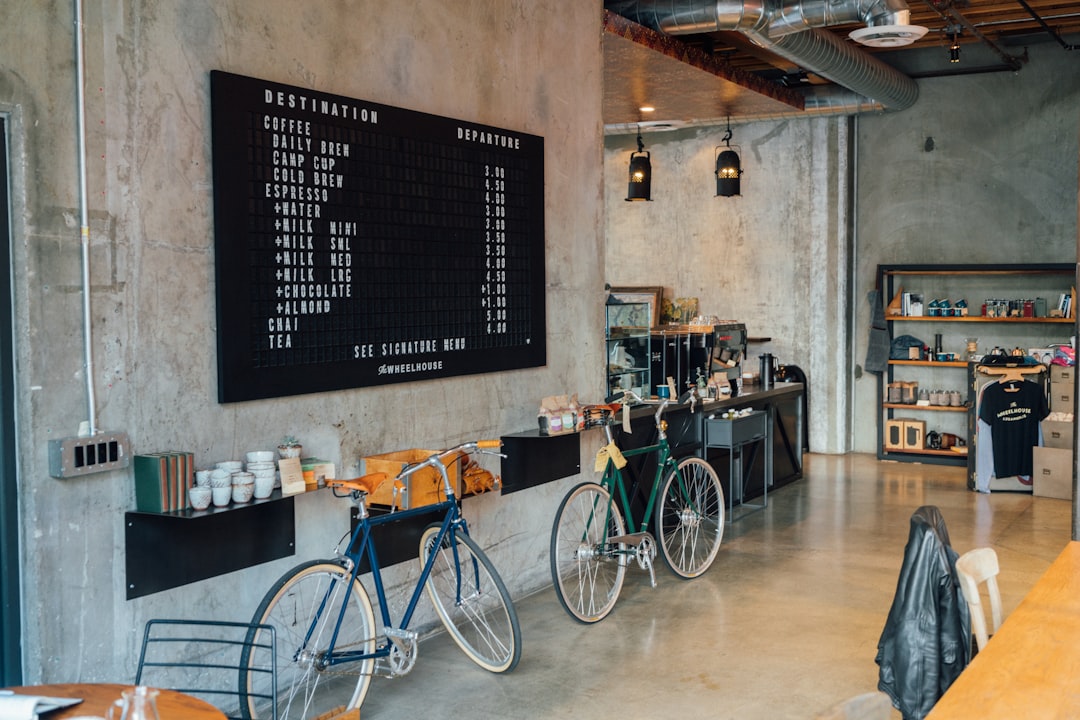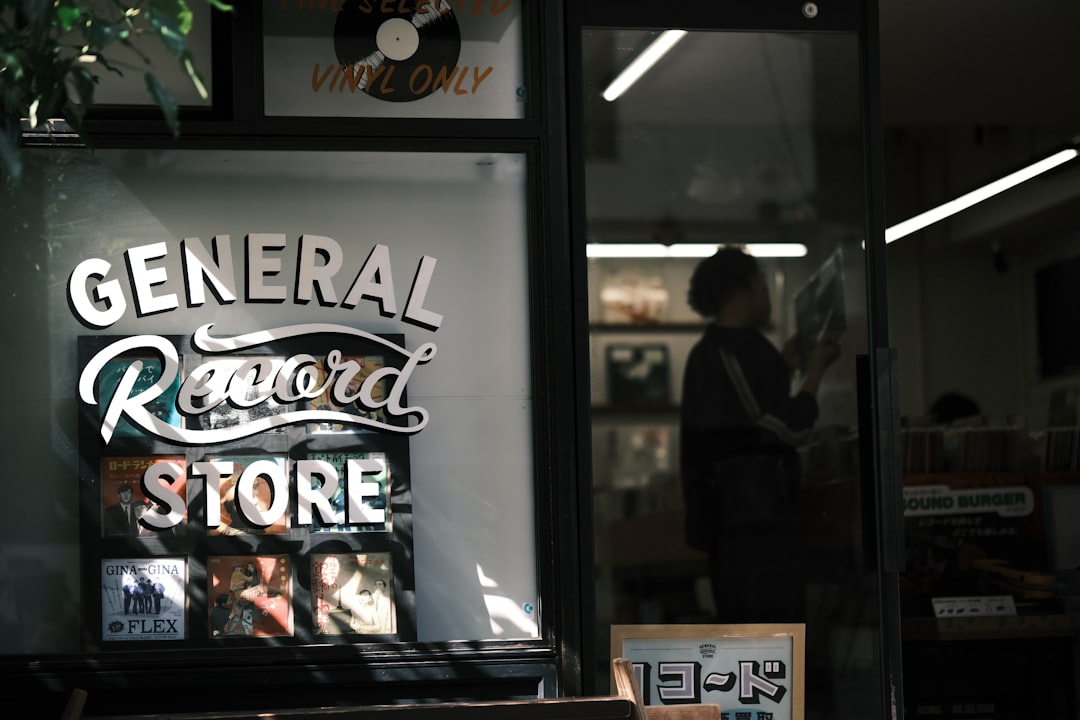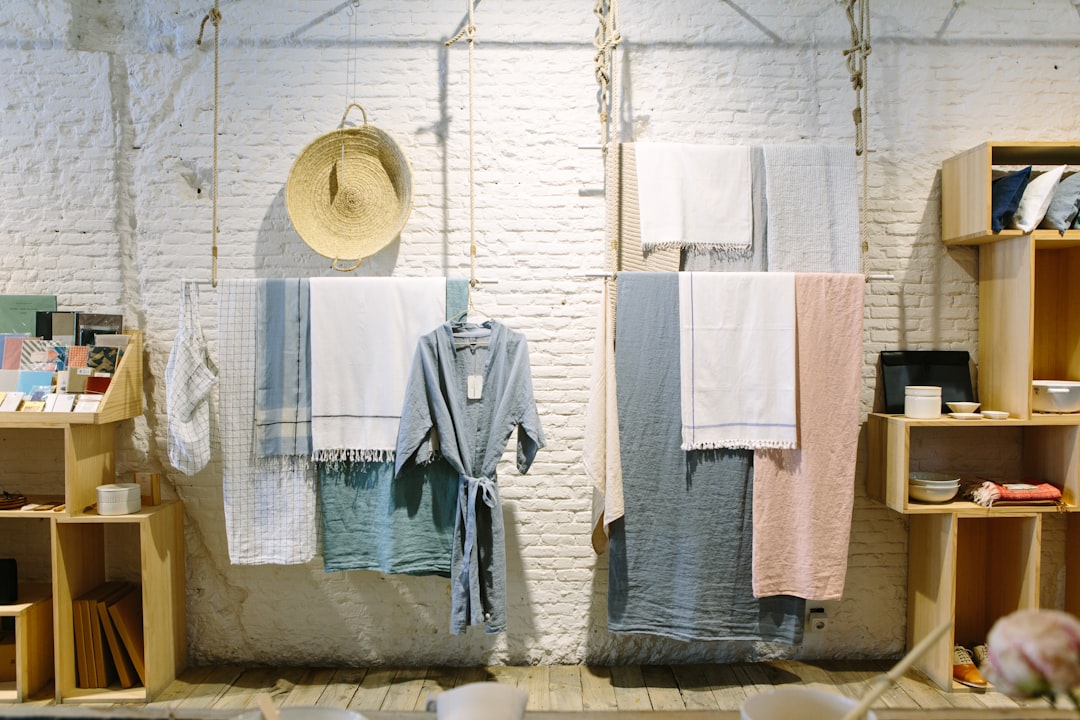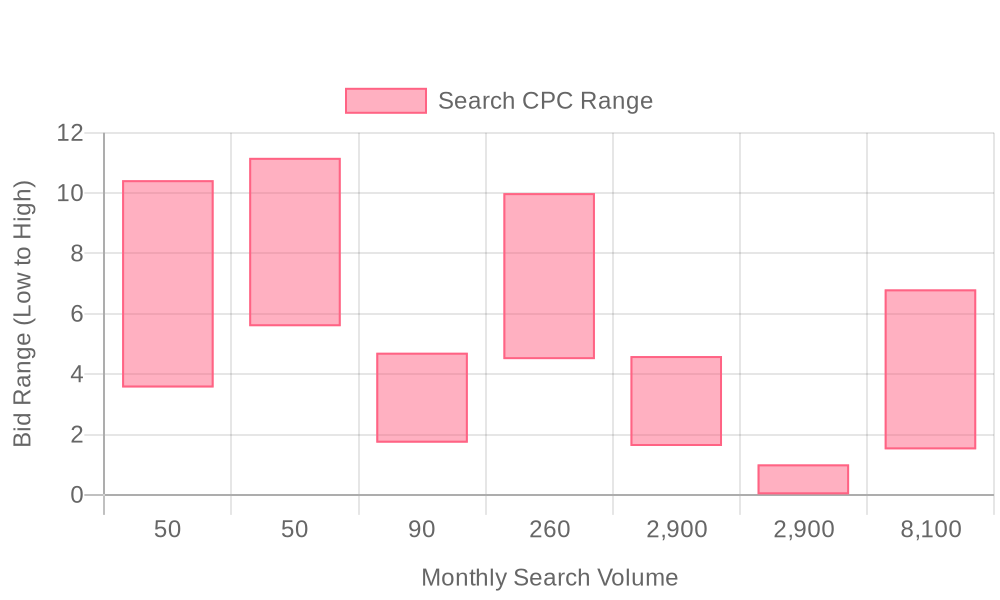
Supercharge your lead generation with a FREE Google Ads audit - no strings attached! See how you can generate more and higher quality leads
Get My Free Google Ads AuditFree consultation

No commitment
Supercharge your lead generation with a FREE LinkedIn Ads audit - no strings attached! See how you can generate more and higher quality leads
Get My Free Google Ads AuditFree consultation

No commitment
Supercharge your lead generation with a FREE Meta Ads audit - no strings attached! See how you can generate more and higher quality leads
Get My Free Google Ads AuditGet My Free LinkedIn Ads AuditGet My Free Meta Ads AuditFree consultation

No commitment
Supercharge your lead generation with a FREE Google Ads audit - no strings attached! See how you can generate more and higher quality leads
Get My Free Google Ads AuditFree consultation

No commitment
In today's fast-paced retail landscape, pop-up stores have emerged as a dynamic way to engage customers and drive sales. Despite their potential, these temporary stores often face challenges in attracting the right audience. Missing high-value prospects who don't get tracked in your CRM can lead to significant lost opportunities. Google Ads offers a unique solution by allowing pop-up store marketers to connect with potential shoppers at the exact moment they are searching for retail experiences. Through precise targeting and creative campaigns, Google Ads bridges online search intent with offline foot traffic—ensuring your pop-up store events are a resounding success. This guide delves into how pop-up store marketers can leverage Google Ads to boost traffic, enhance brand presence, and capture local interest effectively.

Modern pop-up stores thrive on real-time engagement, precise targeting, and actionable insights. Generating high-quality leads consistently requires a refined approach that balances creative messaging with data-driven execution. Each phase of your Google Ads strategy should be designed to maximize both visibility and in-person conversions. By unifying audience data and leveraging advanced attribution, marketers can transform fleeting foot traffic into measurable business growth.
For a deeper dive on retargeting strategies that unify online behaviors with offline outcomes, explore modern frameworks that connect the dots across your sales and marketing stack. You can get started for free with Sona to unify your audience data and measure in-person conversions more effectively.

Pop-up stores thrive on urgency and visibility, making rapid audience engagement critical for success. Google Ads enables brands to harness in-the-moment intent by reaching local shoppers precisely when they are searching for unique retail experiences. Marketers can move beyond anonymous web traffic and pinpoint high-intent individuals and companies using visitor identification tools, ensuring every ad dollar is spent on qualified prospects.
Ready to see how you can optimize your pop-up store campaigns? Get started for free with Sona.

Ready to maximize your pop-up store’s performance? Get started for free with Sona.


Audience segmentation for pop-up store campaigns delivers measurable gains by aligning advertising with real-world visitor behavior. Effective segmentation enables marketers to direct spend toward the most promising prospects, reducing waste and amplifying store traffic. Learn more about optimizing campaign effectiveness in our marketing analytics blog.

| Industry | Keyword | Monthly Search Volume | Competition Level | Low Bid | High Bid |
| Pop Up Stores | shopify pop up app | 50 | LOW | 3.56 | 10.43 |
| Pop Up Stores | best pop up app for shopify | 50 | LOW | 5.59 | 11.17 |
| Pop Up Stores | pop up shop display stands | 90 | HIGH | 1.73 | 4.71 |
| Pop Up Stores | shopify pop up | 260 | LOW | 4.5 | 10 |
| Pop Up Stores | pop up stores | 2900 | LOW | 1.62 | 4.6 |
| Pop Up Stores | pop up shops near me | 2900 | LOW | 0.02 | 1.01 |
| Pop Up Stores | pop up shop | 8100 | LOW | 1.51 | 6.81 |
Maximizing visibility for pop-up stores requires a keyword strategy that balances local relevance with niche intent. Using terms like ‘pop-up store traffic generation’ and ‘Google Ads local campaigns’ ensures campaigns engage high-value prospects searching for in-market experiences and temporary retail activations. For additional insights, explore our curated playbooks on optimizing local advertising strategies.
Long-tail keywords play a critical role in capturing users with precise purchasing intent. Phrases such as ‘Google Ads for Pop Up Stores in [city]’ or ‘best Google Ads for temporary retail events’ deliver qualified visitors more likely to convert or visit in-person. For an overview of how Google Shopping campaigns can help promote products and drive sales for temporary retail, see this resource.
Negative keywords are essential to maintaining budget efficiency and lead quality. By excluding irrelevant queries like ‘permanent retail job openings’ or unrelated event promotions, marketing teams keep spend focused on audiences actively seeking pop-up retail experiences. Access more best practices in our marketing analytics blog.
Integrating enriched data from Sona Identification, marketers can layer intent signals into their keyword strategy. By mapping which audiences are engaging with specific long-tail keywords, teams can dynamically adjust targeting, shifting budgets toward high-converting segments and syncing these insights across CRM and Google Ads for a unified audience approach. To see how this data-driven approach can transform your campaigns, get started for free with Sona.
Building a keyword list for pop-up store campaigns requires a precise focus on event-driven intent. Prioritize terms that capture the urgency and exclusivity of your retail experience: use combinations such as “pop-up shop near me,” “limited time event,” “exclusive retail experience,” and “today only offers.” Expand your list to include location-specific phrases and product categories that reflect your in-store inventory and unique selling points.
Leverage dynamic audience data to refine your keyword strategy further. By integrating real-time visitor identification, marketers can pinpoint which terms attract high-value, in-market prospects rather than relying on generic traffic. This approach ensures your ads are aligned with the real buying intent, allowing budget allocation toward keywords that drive qualified foot traffic and event attendance.
Compelling ad copy for pop-up stores centers on immediacy, exclusivity, and the promise of a unique retail encounter. Use action-driven language like “Don’t Miss Out,” “One Day Only,” and “Experience It Live” to create fear of missing out and drive immediate action. Clearly communicate the event’s date, location, and special offerings in every headline and description.
Refine your messaging using data on audience segments and real-time engagement. Marketers can adjust copy based on which audience cohorts are showing the highest intent, using insights from unified data sources. For an overview of how Google Shopping campaigns can help promote products online and increase sales, see this guide. This continuous feedback loop ensures every ad variation is tailored to resonate with the most promising prospects, driving both clicks and in-store visits.
Landing pages must carry forward the urgency and details highlighted in your ads. Feature clear calls-to-action, event specifics, and a frictionless RSVP or registration process. Use geo-targeting to pre-fill store location details and showcase local inventory, making the event feel accessible and relevant.
Consistent messaging between ads and landing pages is essential to maximize conversion rates. By synchronizing audience and behavioral data across both assets, marketers eliminate gaps that can lead to missed targeting or drop-off. This unified approach allows for personalized content and seamless tracking from ad click to in-store visit, leading to higher engagement and conversion accuracy.
Continuous optimization is crucial for pop-up store marketing success. Move beyond manual bid adjustments and audience tweaks by employing predictive analytics that surface actionable insights from campaign performance data. Instead of spending time building static audiences, marketers can let automation dynamically update targeting based on lead movement through the funnel.
Advanced conversion tracking brings online and offline attribution together, measuring the true impact of digital ads on physical store visits. Integrate CRM and ad platforms so enriched audience profiles and new leads sync automatically, ensuring campaigns are always targeting the most relevant prospects. This unified data flow streamlines reporting and enables smarter budget allocation across future pop-up events, maximizing ROI for every campaign. To learn more about retargeting strategies that support ongoing optimization, get started for free with Sona.
Pop-up stores thrive on agility, buzz, and hyper-local engagement. Maximizing these strengths requires more than creative merchandising or foot traffic—it demands precision digital strategies that translate online attention into in-store visits. Explore how Google Shopping campaigns can help businesses promote products online and increase sales, while leveraging real-time audience insights to better target local shoppers.
Success hinges on synchronizing every touchpoint in the customer journey, from initial discovery to post-visit re-engagement. Advanced marketing platforms allow teams to unify real-time behavioral insights and offline data, ensuring every campaign dollar turns into measurable impact. For actionable strategies, visit our marketing analytics blog or get started for free with Sona to see how unified data can transform your results.
Harnessing the power of Google Ads for Pop Up Stores goes far beyond setting up basic campaigns. By linking all available data—visitor identification, real-time local intent, dynamic audience sync, and cross-channel attribution—brand teams can craft a connected, high-converting journey that transforms digital interest into real-world store traffic.
In conclusion, harnessing the power of Google Ads can significantly amplify the reach and impact of your pop-up store, drawing more foot traffic and enhancing overall visibility. Throughout this article, we've explored the strategic use of Google Ads to effectively promote temporary retail locations, detailing essential tips and best practices tailored specifically for pop-up ventures.
Understanding your target audience, crafting compelling ad copy, and utilizing location-based targeting are crucial strategies that can transform your pop-up store's promotional efforts. By integrating these techniques, you not only address the challenges of reaching potential customers but also position your store for success in a competitive retail landscape.
The journey to maximizing your pop-up store's potential is filled with opportunities for growth and innovation. Embrace the dynamic nature of digital advertising to create memorable experiences that leave a lasting impression on your customers. With the right approach and tools, your vision of a thriving pop-up store can become a reality.
To take your marketing efforts to the next level, start for free and discover how our platform can enhance your advertising strategies and drive actionable insights for your business today.
To set up Google Ads for your pop-up store, define clear goals and key performance indicators, conduct keyword research to find high-intent terms, and build geo-targeted campaigns that focus on users within a specific radius of your store location.
Best practices include defining precise campaign goals, using geo-targeting, creating compelling ad creatives with urgency, and constantly measuring and optimizing campaigns using conversion tracking.
You can track the effectiveness using store visit conversion tracking, advanced attribution models, and by integrating CRM data to sync enriched audience segments with your Google Ads campaigns.
Yes, you can use Google Ads to drive local traffic by implementing geo-targeting strategies and focusing ad spend on nearby audiences to maximize foot traffic.
Effective types of Google Ads for pop-up stores include search campaigns for capturing high-intent traffic, display ads for maintaining visibility, video ads for showcasing events, and remarketing ads to re-engage interested users.
Join results-focused teams combining Sona Platform automation with advanced Google Ads strategies to scale lead generation

Connect your existing CRM

Free Account Enrichment

No setup fees
No commitment required

Free consultation

Get a custom Google Ads roadmap for your business
Join results-focused teams combining Sona Platform automation with advanced Meta Ads strategies to scale lead generation

Connect your existing CRM

Free Account Enrichment

No setup fees
No commitment required

Free consultation

Get a custom Google Ads roadmap for your business
Join results-focused teams combining Sona Platform automation with advanced LinkedIn Ads strategies to scale lead generation

Connect your existing CRM

Free Account Enrichment

No setup fees
No commitment required

Free consultation

Get a custom Google Ads roadmap for your business
Join results-focused teams using Sona Platform automation to activate unified sales and marketing data, maximize ROI on marketing investments, and drive measurable growth

Connect your existing CRM

Free Account Enrichment

No setup fees
No commitment required

Free consultation

Get a custom Google Ads roadmap for your business
Over 500+ auto detailing businesses trust our platform to grow their revenue
Join results-focused teams using Sona Platform automation to activate unified sales and marketing data, maximize ROI on marketing investments, and drive measurable growth

Connect your existing CRM

Free Account Enrichment

No setup fees
No commitment required

Free consultation

Get a custom Google Ads roadmap for your business
Over 500+ auto detailing businesses trust our platform to grow their revenue
Join results-focused teams using Sona Platform automation to activate unified sales and marketing data, maximize ROI on marketing investments, and drive measurable growth

Connect your existing CRM

Free Account Enrichment

No setup fees
No commitment required

Free consultation

Get a custom Google Ads roadmap for your business
Over 500+ auto detailing businesses trust our platform to grow their revenue
Our team of experts can implement your Google Ads campaigns, then show you how Sona helps you manage exceptional campaign performance and sales.
Schedule your FREE 15-minute strategy sessionOur team of experts can implement your Meta Ads campaigns, then show you how Sona helps you manage exceptional campaign performance and sales.
Schedule your FREE 15-minute strategy sessionOur team of experts can implement your LinkedIn Ads campaigns, then show you how Sona helps you manage exceptional campaign performance and sales.
Schedule your FREE 15-minute strategy sessionOur team of experts can help improve your demand generation strategy, and can show you how advanced attribution and data activation can help you realize more opportunities and improve sales performance.
Schedule your FREE 30-minute strategy sessionOur team of experts can help improve your demand generation strategy, and can show you how advanced attribution and data activation can help you realize more opportunities and improve sales performance.
Schedule your FREE 30-minute strategy sessionOur team of experts can help improve your demand generation strategy, and can show you how advanced attribution and data activation can help you realize more opportunities and improve sales performance.
Schedule your FREE 30-minute strategy sessionOur team of experts can help improve your demand generation strategy, and can show you how advanced attribution and data activation can help you realize more opportunities and improve sales performance.
Schedule your FREE 30-minute strategy session





Launch campaigns that generate qualified leads in 30 days or less.
